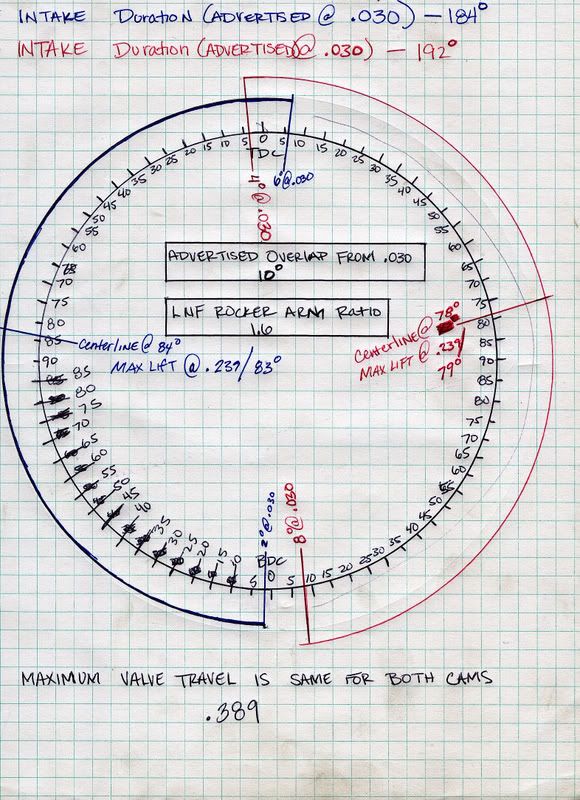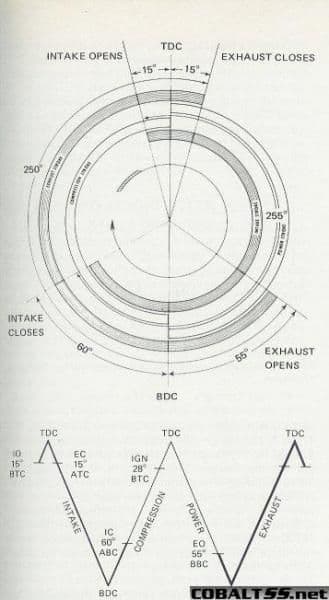Since you guys had SO much fun with the Optimum Spark tables, I thought I'd throw these out there too!
It's been a LONG time since I've posted my cam tables, mostly because they just ended up in the so called "professional" tuners tunes. I got tired of seeing my EXACT tables copied into tunes that guys were selling as their own. And not a word of feedback to help us all learn more either, just quietly stealing somebody else's work and making a profit on it because you're too stupid to figure it out yourself. (Not meant for anyone on here, or at least anyone that actually posts on here. Rant over!)
So I figured screw it, there's some good guys on here and they deserve the info. So here they are. I think these are WAY different than the ones I posted on here like 2 years ago. These will probably be different than what I'll be running in 2 weeks anyway! I'm still learning on this stuff everyday, NOBODY knows it all.
Here's the warnings...
Please don't just paste these into your tunes without knowing a little bit of what you're doing. These tables work in MY car, my car is not like most others out there. I have a bigger (2.4L) throttle body for one thing, along with many other mechanical engine changes. One thing to notice, where my freeway cruise EGR section is. If you're tuning a Cobalt for instance, your freeway cruise rpm and load will be very different than mine. I have taller tires in back even, that will effect which cells you want to run what numbers in also.
One thing I've finally got a handle on is not losing mpg and still retaining good throttle response and acceleration through all rpm's and loads. The latest tunes I've had are getting the best freeway mpg I've ever had. The biggest difference is the mpg isn't dropping off above 65-70mph like it used to. I'm getting almost 30mpg at 75-80mph flat ground cruising now! I think the biggest factor is intake timing. I did a TON of pulls with all kinds of cam timing over the last 2 or 3 years, and learned that the LNF likes intake advance.
Here's what you can do to see if these tables work for you, or give you anything. Try ALL KINDS of pulls, especially down low in the rpm's. Like do a pull from 40 to 60 in 4th gear, you'll be starting out at like 2k rpm and it isn't gonna pull too hard, but it's a good test. Then try changing the cam tables, sometimes drastically is best, and do the same pull on the same stretch of road. I found adding in a bunch of intake advance consistently improved my times on pulls like that. Also a 3rd gear pull from 35mph or so, all the way to your rev limit. BTW, as you can see like most everyone else, I never got much better than stock cam timing at high rpm and high load areas. The stock settings, or a few degrees one way or another seem to work fine. Just depends on how much combustion chamber pressures you think your engine can take, and how fast you want the top end to rev out. Too much exhaust advance and it won't want to rev, too little and you'll be losing compression. Again, experiment with bigger numbers than you'd think so you can really see what's happening with your changes. Move one cell up or down one number and you're never gonna tell what it's doing. Try 10 or even 20 and see what it does.
Have fun guys! Sorry for the head banging and frustration that might follow, as my Optimum Spark table thread seemed to do. I think a couple guys did figure it out and did get their cars running better though, didn't they?
John
Oh, btw, I have all other cam tables set to these same values. Meaning make cold, cat warmup, knock, idle, etc all the same. And also btw, these tables are NOT the absolute gospel best cam tables in existence, they work pretty good in my situation though. I'll always be tweaking them though!
I'm going to add some pictures that I've posted before but it's been awhile. These help explain the basics of cam timing.
SB08 I stole this one from you didn't I?---











 Reply With Quote
Reply With Quote
